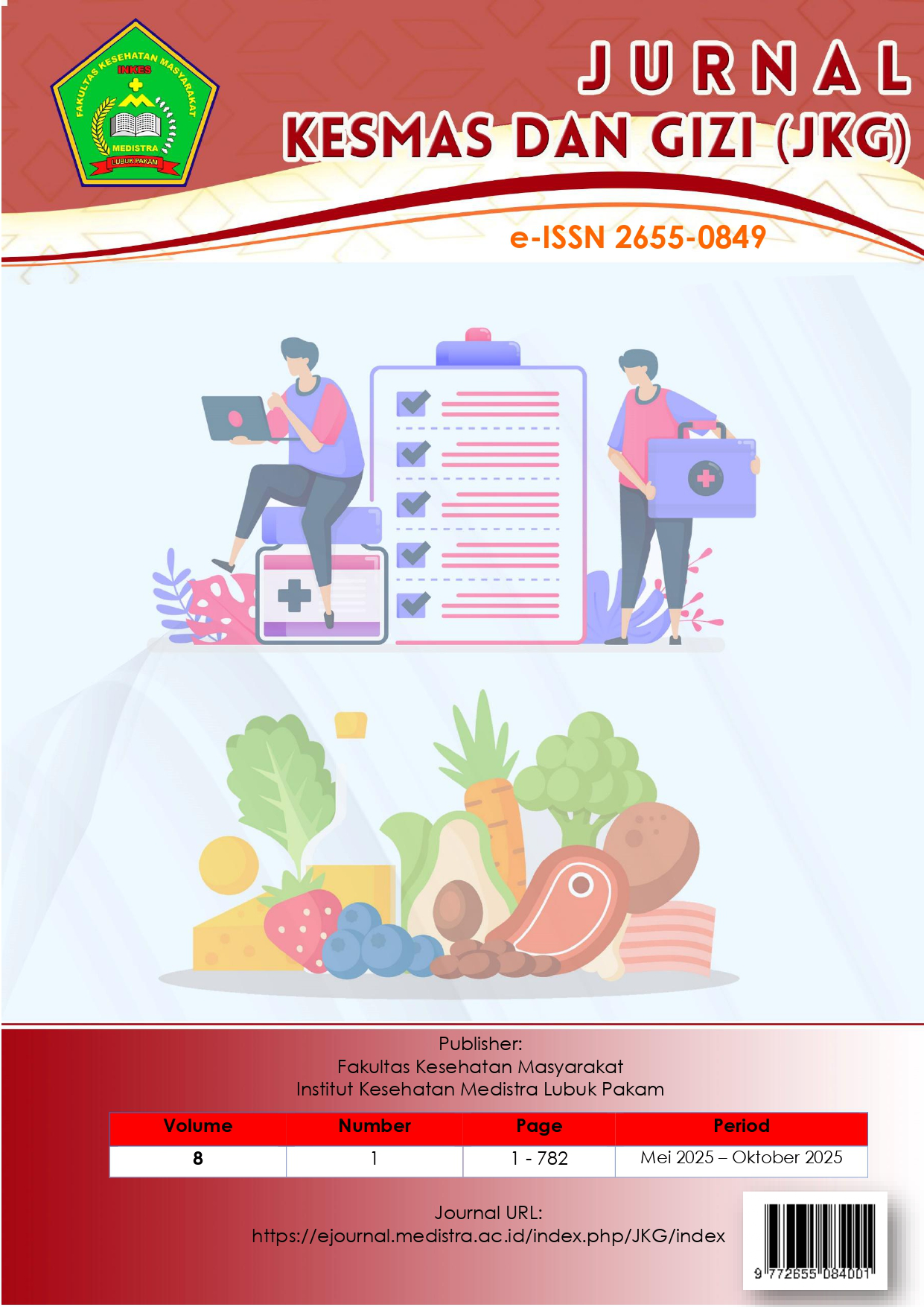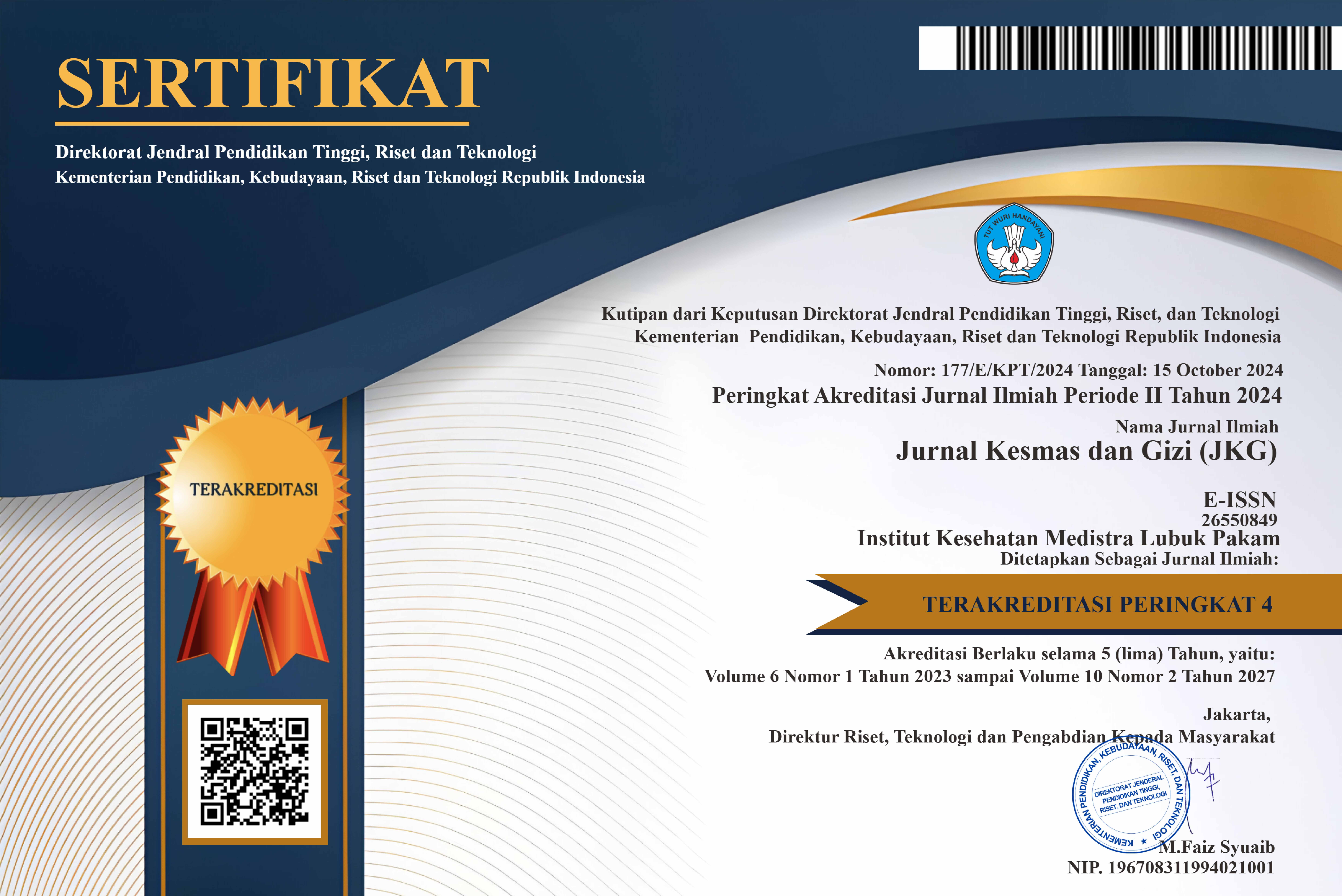Factors Affecting the Implementation of Hospital Information System (HIS)
DOI:
https://doi.org/10.35451/jbvaag02Keywords:
SIMRS, HR, technology, efficiency, service quality, recommendations, HR trainingAbstract
Background: The implementation of the Hospital Management Information System (SIMRS) at the Regional Public Hospital of Sidikalang (RSUD Sidikalang) aims to enhance the efficiency and quality of healthcare services. However, technical challenges such as the lack of data integration across units and the readiness of human resources (HR) hinder the success of its implementation. Research Objectives: This study aims to analyze the implementation conditions of SIMRS at RSUD Sidikalang, identify the factors that hinder its success, and provide policy recommendations to improve the system’s efficiency, focusing on HR readiness, technological infrastructure, and hospital management support. Research Methodology: This research uses a quantitative approach with a descriptive correlational design. Data was collected through surveys distributed to 161 employees of RSUD Sidikalang involved in the management of SIMRS. Data analysis was performed using the Chi-Square test to determine the relationship between variables, and multiple logistic regression to analyze the factors most affecting SIMRS implementation. Research Results: The findings indicate that the Human Resources (HR) factor has a significant impact on the success of SIMRS implementation. Respondents who rated HR positively were more likely to assess SIMRS implementation as good. Technology and organizational factors also played a crucial role in enhancing the effectiveness of SIMRS. Conclusion: The success of SIMRS implementation at RSUD Sidikalang heavily depends on HR readiness, the quality of technological infrastructure, and hospital management support. Continuous HR training, adequate technology maintenance, and improved coordination between hospital units are key to maximizing the benefits of SIMRS.
Downloads
References
[1] Siregar, et al. (2022). Pengaruh kesiapan sumber daya manusia terhadap keberhasilan implementasi SIMRS. Jurnal Sistem Informasi Kesehatan, 10(3), 45-56.
[2] Dewi, et al. (2023). Analisis faktor penghambat dalam adopsi teknologi informasi di rumah sakit. Jurnal Teknologi Kesehatan, 15(2), 112-120.
[3] Fauzan, A., & Noviandi, R. (2020). Kebijakan pemerintah dalam mendukung implementasi SIMRS di rumah sakit. Jurnal Administrasi Kesehatan, 9(1), 25-34.
[4] Rifly, R. (2022). Tantangan dalam mengadopsi teknologi baru di rumah sakit: Studi kasus implementasi SIMRS. Jurnal Manajemen Rumah Sakit, 17(4), 67-78.
[5] TryWindy, S., Hendra, R., & Suryani, M. (2020). Evaluasi sistem informasi rumah sakit: Studi pada rumah sakit di Indonesia. Jurnal Evaluasi Sistem Kesehatan, 8(1), 99-110.
[6] Sugiyono, (2018). Metode Penelitian Kuantitatif, Kualitatif, dan R&D. Bandung: Alfabeta.
[7] Creswell, J. W. (2017). Research Design: Qualitative, Quantitative, and Mixed Methods Approaches (5th ed.). Thousand Oaks, CA: SAGE Publications.
[8] Kemenkes RI. (2013). Peraturan Menteri Kesehatan No. 82 Tahun 2013 tentang SIMRS.
[9] Shalannanda, R. & Hakimi, A. (2016). Pengaruh SDM terhadap Implementasi SIMRS. Jurnal Teknologi Informasi dan Manajemen Kesehatan, 4(2), 123-135.
[10] Puspitasari, M., Putra, A. W. & Roziqin, R. (2017). Implementasi SIMRS dalam Meningkatkan Kualitas Layanan. Jurnal Kesehatan Masyarakat, 12(1), 45-59.
[12] Lestari, N., dkk. (2020). Pengaruh Teknologi Informasi terhadap Kualitas Layanan Sistem Informasi Manajemen Rumah Sakit (SIMRS) di Rumah Sakit Umum Daerah. Jurnal Teknologi Kesehatan, 7(3), 145-158.
[13] Hatta, S. (2013). Perkembangan Teknologi Informasi dalam Pelayanan Kesehatan. Jurnal Teknologi dan Sistem Kesehatan, 5(2), 120-134.
[14] Suryana, A. (2012). Teknologi Informasi: Gabungan antara Perangkat Keras dan Perangkat Lunak. Jurnal Manajemen Informasi, 3(4), 55-63.
[15] Galih, W. (2019). Pengaruh Struktur Organisasi terhadap Kepuasan Pengguna Sistem Informasi Manajemen Rumah Sakit. Jurnal Administrasi Rumah Sakit, 5(1), 101-112.
[16] Yusof, M. M., et al. (2006). Human Organization Technology (HOT) Fit Model: A Framework for Evaluating Health Information Systems. International Journal of Information Management, 26(1), 14-22.
[17] DeLone, W. H., & McLean, E. R. (2003). The DeLone and McLean Model of Information Systems Success: A Ten-Year Update. Journal of Management Information Systems, 19(4), 9-30.
[18] Molla, A., & Licker, P. S. (2001). E-Commerce Systems Success: An Attempt to Extend and Respecify the DeLone and McLean Model of IS Success. Journal of Electronic Commerce Research, 2(4), 131-141.
[19] Sittig, D. F., et al. (2002). Evaluating the Impact of Health Information Systems on Health Care Delivery. Journal of Healthcare Management, 47(2), 113-128.
[20] Yusof, M. M., et al. (2008). Human Organization Technology (HOT) Fit Model: A Framework for Evaluating Health Information Systems. International Journal of Information Management, 26(1), 14-22.
[21] Nadiya, R. (2021). Pengaruh Kompetensi SDM terhadap Keberhasilan Implementasi SIMRS. Jurnal Manajemen Rumah Sakit, 15(3), 122-134.
[22] Suryana, A. (2012). Teknologi Informasi: Gabungan antara Perangkat Keras dan Perangkat Lunak. Jurnal Manajemen Informasi, 3(4), 55-63.
Downloads
Published
Issue
Section
License
Copyright (c) 2025 Setyawati Br Ginting, Felix Kasim, Rahmad Ramadhan Ritonga

This work is licensed under a Creative Commons Attribution 4.0 International License.
Copyright in each article is the property of the Author.


























